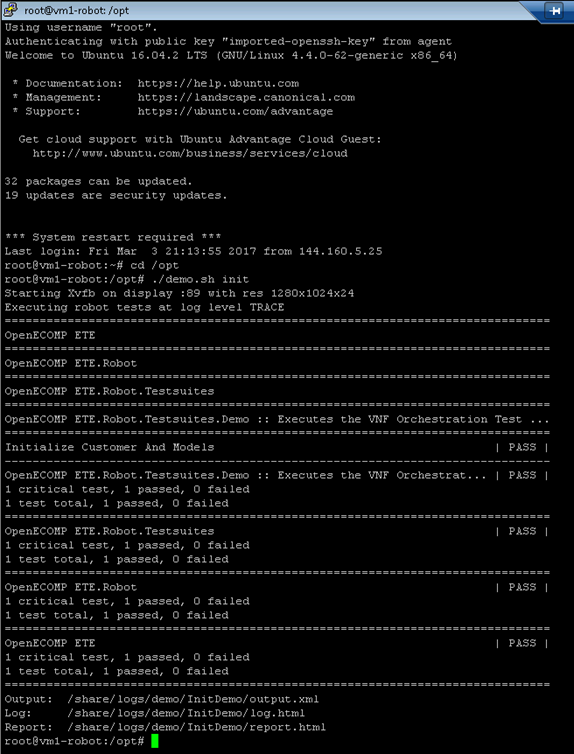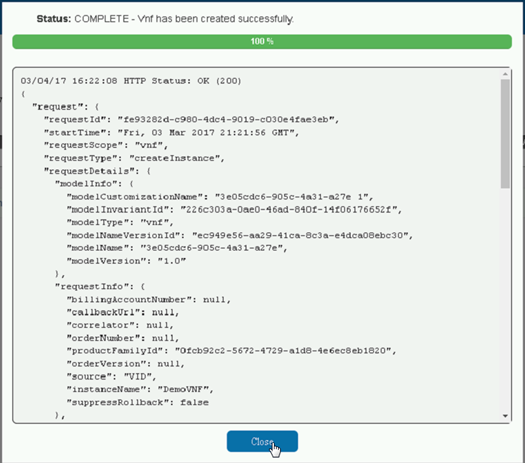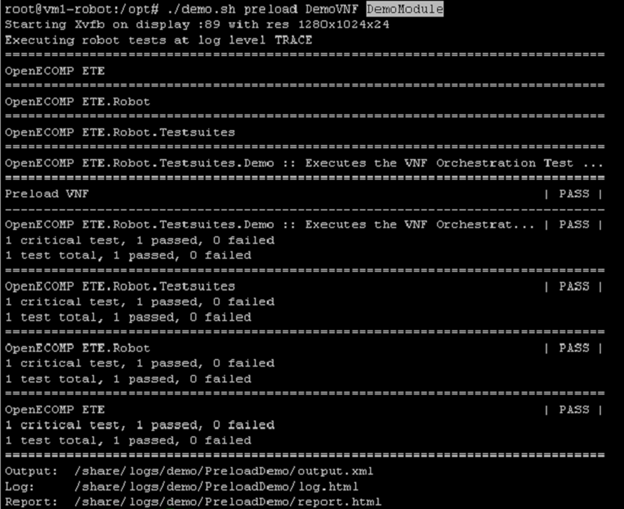In this tutorial we show how to take a service design that has been distributed and create a running instance. To simplify this we are going to use scripts to perform design, pre-load of customer and network information, and closed loop orchestration.
Let's start by finding the the IP Address of vm1-robot in the Rackspace list of servers. Use this vm1-robot IP address, the Rackspace private key created in the first tutorial, and the PuTTY client to login to vm1-robot as root.
At the command prompt type
cd /opt
./demo.sh init
Wait for all steps to complete as shown below
From the OpenECOMP portal, login to the VID application, browse to locate the demo SDC Service Models, and Deploy an instance of the demoVFW.
Fill in the information for a Service Instance as shown below and press Confirm.
Wait for a response and close the window
You should now see a service instance displayed
Add a VNF using the drop down button, complete, and enter the following information. Note the tenant and LCP region choices may be different for your Rackspace account.
Wait for an close the response window.
Return to the PuTTY window and type the command to load VNF configuration information
./demo.sh preload DemoVNF DemoModule
Wait for the results as shown below
Add a VF Module using the drop down button
Fill in information for the VNF module and confirm
Wait for the response and close the window as was done in prior steps. The VF Module creation can also be viewed as a stack in Rackspace as shown below.
To complete the service instance we will run one more script that mounts the Traffic Generator on the Application Controller to enable policy driven configuration changes. Return to the PuTTY window, type the command and wait for the response as shown below.
./demo.sh appc DemoModule
<<Add steps to observe closed loop control>>











